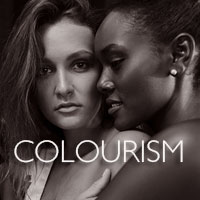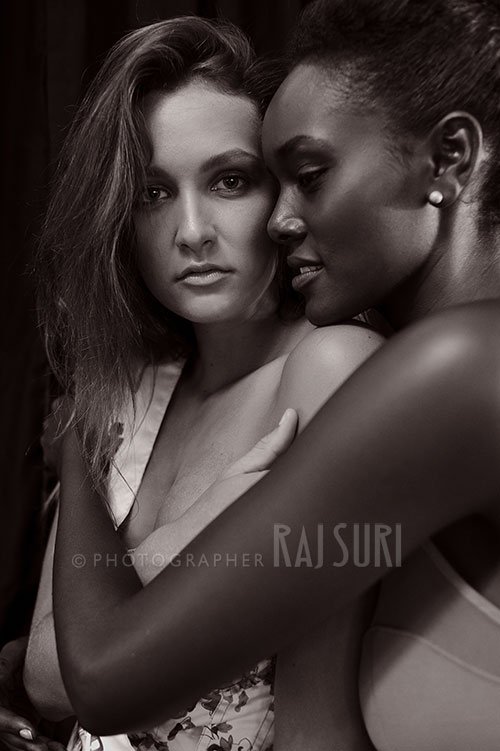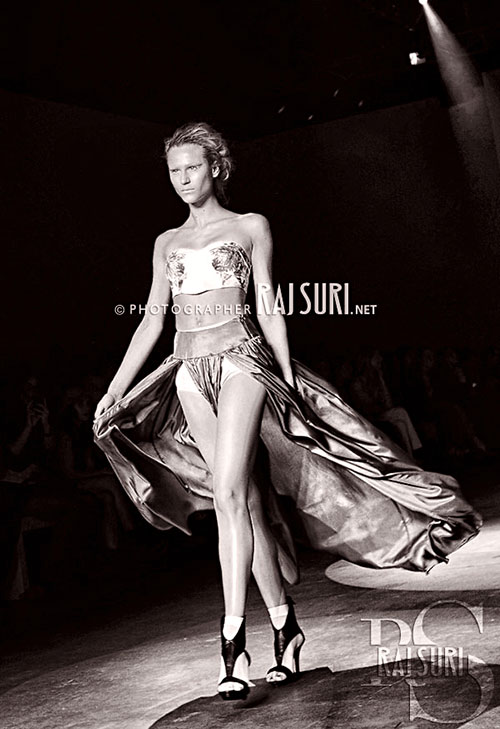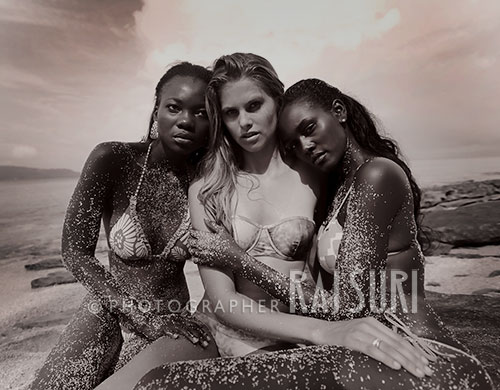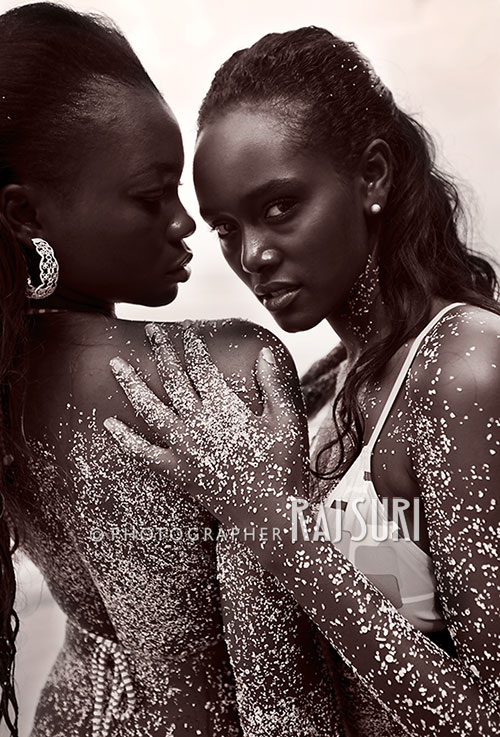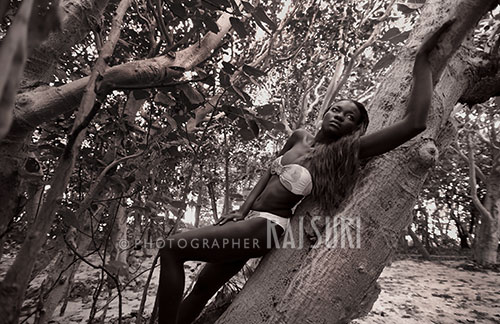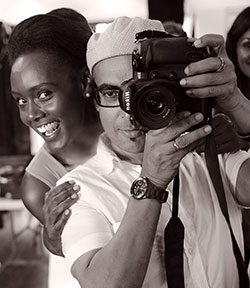I have worked with models and talent of all skin colours and shades and many nationalities in Australia, India, South Africa, UAE etc. One thing I have learnt as a photographer is that skin colour is most beautiful when left natural. Yes, I like to use my photography to keep the natural skin tones. Yes, we can control light and exposure to change the mood. By that I mean not to over light a “dark” model to lighten the skin tones and similarly not to tone down the light to darken a “light skinned” model.
Do we have a colour discrimination in the fashion and film industry – yes we do. Can we say it is specific to a nation – I do not think so.
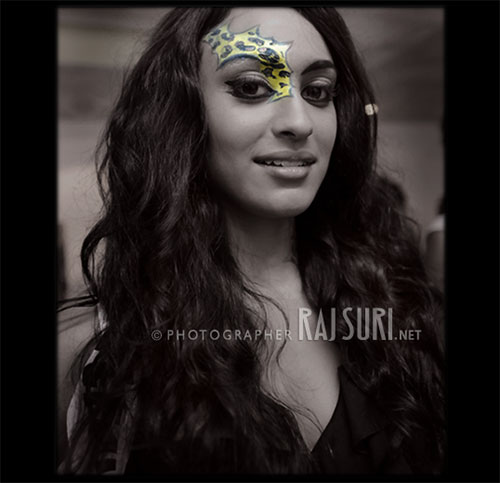
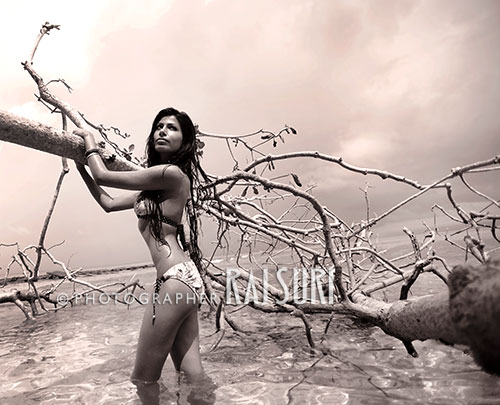
So what is the colourism issue in the industry?
In India, the country of my heritage, the clients have asked me, almost regularly, to get a “fair” skin model for the fashion campaigns. It is a usual perception that “fair” skin is somehow more acceptable. One of the answers I get from the client is that to use a ‘fair’ model, the product will look more ‘global’. On one occasion where I was responsible for the complete production of the photo shoot, including selection of the model, I suggested a beautiful professional model, with good credentials, a former cover winner of a reputed glamour magazine, who happened to be naturally dark skinned. The client needed a lot of convincing that the model will be suitable for the campaign. Given that I had the final creative say the client agreed. However, the next shoot the same client made it clear that if I need to get the job, it will have to be a ‘fair’ model. Reason: because the product was for the foreign clients – keeping in line to be acceptable internationally. The irony is that the western world looks at Indian skin tone as ‘dark’ and like to see more of ‘Indian’ look (not sure what that ‘Indian look’ is as there are so many shades of Indians). Interestingly, most Indian characters played in the Hollywood films are “dark skinned” – as if to generalise that is the only skin tone of Indians.
 There are now a lot of foreign ‘fair’ models’ working in the Indian industry. While the fashion advertising campaigns, including TV commercials prefer to show the ‘fair’ look models and talent. By using a ‘fair’ skinned model almost always, or showing a face a few shades lighter than the original skin colour, one is sending a wrong message to the young people in thinking somehow ‘fair’ skin is better. In Bollywood there is this long time romance with ‘fair’ skin – to the extent that some female actors are made to look two to three shades lighter than they are in reality. You only have to see some of the publicity posters to know that it is not the actual skin tone of the actor. But then it is a ‘fantasy’ world isn’t it?
There are now a lot of foreign ‘fair’ models’ working in the Indian industry. While the fashion advertising campaigns, including TV commercials prefer to show the ‘fair’ look models and talent. By using a ‘fair’ skinned model almost always, or showing a face a few shades lighter than the original skin colour, one is sending a wrong message to the young people in thinking somehow ‘fair’ skin is better. In Bollywood there is this long time romance with ‘fair’ skin – to the extent that some female actors are made to look two to three shades lighter than they are in reality. You only have to see some of the publicity posters to know that it is not the actual skin tone of the actor. But then it is a ‘fantasy’ world isn’t it?
In Australia, the country where I live, it is a similar story with a difference. Having been shooting the fashion week in Sydney, off and on for over 10 years, it is the ‘white Caucasian’ models which are mainly walking the ramp shows. The same is true in the pages of the Australian print campaigns. Though have started seeing ‘dark’ and ‘coloured’ and Asian models occasionally now. But we still have a long way to go. While Australia is a migrant country, there are many second and third generation Australians who aspire to be models and work in the entertainment industry. The representation of Asian, Indian and other non-Caucasian skin tones is not proportionally visible in the modeling, film and media industry yet. Besides the state run media there are very few television serials, programs, including news programs that represent the ‘coloured’ Australians proportionally in the country. Unfortunately, due to this colourism and lack of opportunities many young find it hard to break into the industries of their choice in their country of birth Australia. Usually, the young talent has to make a difficult decision to move overseas. From experience, I know, especially for Indian Australians, that their first choice will be to be absorbed in Australian industry, the country of their upbringing. Lack of opportunities for their ‘skin type’ in Australia does play an important part for their decision to leave. The dilemma is that in spite of being of Indian origin, they usually find it as difficult in Bollywood as they continue to face colourism there. Yes, agreed, a character in a film, has to have certain specifications, age, skin tone, ethnicity, hair colour etc. however, it is the pre determined perception of casting ‘fair’ skin tone female actors which is questionable. So in many ways the young Australian talent of non-Caucasian background feels trapped. The twist is that once they make it overseas, Australia somehow accepts them more easily…almost like the talent needed to be first “endorsed for quality” from foreign land! This can be very stressful for the home grown talent. Acceptance is a very big deal for every young talent, especially from their own.
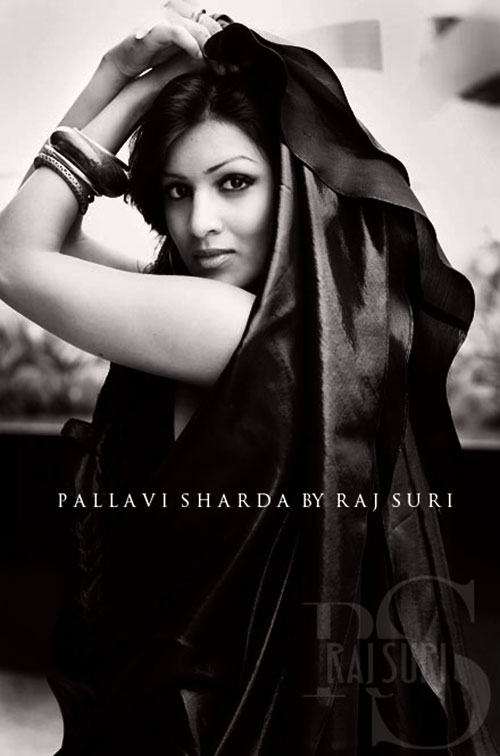
As a professional photographer and a film producer, I can say that there is no skin tone, which is awful – all skin tones are beautiful. In fact skin colour has nothing to do with the actual beauty or posing or acting talent of the person.
A lot of young female, Australian ethnic models come up to me ( with beautiful dark skin) and say that wish they did not have the ‘dark skin’ – that the celebrity has amazing ‘fair skin’ tones – how can she look like so and so celebrity? First of all there is nothing wrong with ‘dark skin’ and I don’t know of any person I have photographed who has a flawless skin (as seen in the magazines) – yes, no one. Even the most ‘beautiful’ face of the world will have blemishes on the skin. Under the camera it will always show, especially at 36 megapixels at hundred percent magnification.
So as creatives we first apply make-up (great respect for makeup artists) and photographers use tools to bring out the best angles and then use post production (Photoshop) to enhance the look. I have nothing against ‘look enhancement’ – after all we are in the business of selling dreams and stories and honestly no story is interesting if you have no transformation, a before and the after, a conflict and the triumph. The problem happens when you overdo it and send out a message that all skin is perfect ‘fair’ tone. My photo retoucher has a standard instruction for all work coming out of my studio to keep the skin tones as natural – no ‘plastic’ skin and definitely no ‘4 stops lighter’’ shades in colour.
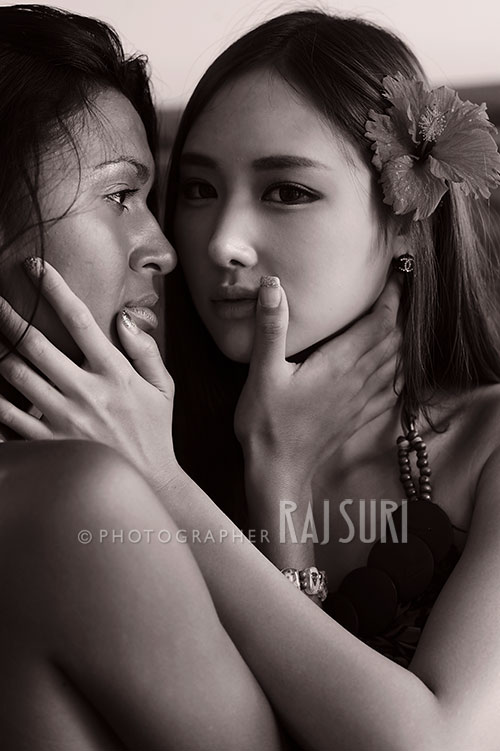 Unfortunately, we photographers are just one part of the chain in this industry. There has to be a collective rejection of the look of ‘unnatural bodies’ and superficially enhanced ‘fair’ tones in this industry. Sure, am all for art and fine art for exhibition purposes, but when one sells advertising for products, one has to keep within the tangible world. We risk bringing up a new generation who has unrealistic expectations which I am afraid is not sustainable. We need to bring up young women who are confident in their own skin without trying to be like ‘that some one else’ that does not exist in reality.
Unfortunately, we photographers are just one part of the chain in this industry. There has to be a collective rejection of the look of ‘unnatural bodies’ and superficially enhanced ‘fair’ tones in this industry. Sure, am all for art and fine art for exhibition purposes, but when one sells advertising for products, one has to keep within the tangible world. We risk bringing up a new generation who has unrealistic expectations which I am afraid is not sustainable. We need to bring up young women who are confident in their own skin without trying to be like ‘that some one else’ that does not exist in reality.
If someone gets rejection on the basis of his or her skin colour, its plain wrong. The peer pressure alone plays an important part in making a lot of young people insecure. On top of that they have to deal with this colourism problem. Yes, the world is becoming a smaller place but there is still a long way to go to be accepted without a “skin tone’ bias. It is universal. Lets change that!
It is an unsaid fact that in the western countries the industry looks at dark skin models as ‘non standard’ Sure, there will always be exceptions but generally that is the perception.
So in effect it comes down to is that ‘fair’ skin is the preferred skin of choice. And ‘dark’ skin people remain at the bottom of the pyramid. That is unfair!
The question to ask is WHY?
Well, not to be over simplistic, I think to a certain extent media (news, print, TV and film) has played a very crucial part in bringing about these perceptions. There is this love affair with showcasing beautiful perfect ‘fair’ bodies – glamourising the ‘fair’ skin while the stories of ‘dark’ people are anything but glamour or perfect. Almost everyday, in the news, we see ‘dark’ skin people living miserable lives. Naturally, perceptions are formed early in life that somehow ‘fair’ is better and hence ‘dark skin is marginalised. With Internet, there is a great opportunity and a real chance that these long ingrained prejudices can be changed. Hopefully, we can make a start today. Every person can look beautiful (yes, even in the physical context) – colour of skin has nothing to do with beauty. Everyone is a gift to the world. Start by believing in yourself, as you are, and see the difference. TRUE BEAUTY IS COLOURLESS.

